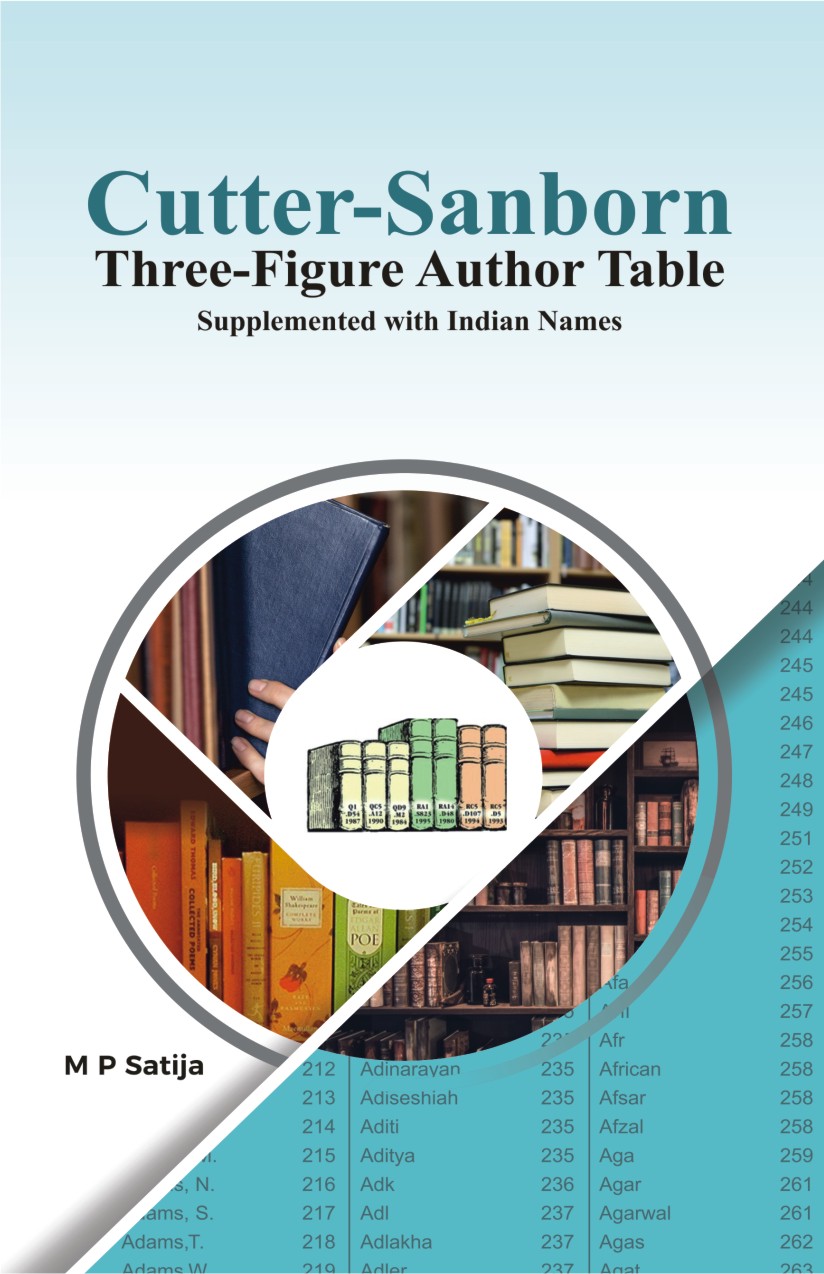It is a popular misconception that book numbers have only a subsidiary role in library classification. The fact of the matter is that book numbers are indispensable for a fine, precise and overall logical arrangement of documents on the library shelves. The function of the book numbers begins from that of the class numbers ends. The present book has a twofold task. First, it provides an authentic version of the Cutter-Sanborn three-figure table as in India many unauthorized versions of doubtful pedigree are being used. As well known, and often rued, these tables are not entirely suitable for Indian names as these were designed for American and European authors. To mitigate the problem the table has been supplemented with Indian names added at their alphabetical place for ready use .This extended table has approximately 15850 entries (original table has only 12361). It is a time saver. Some new Western names have also been added to facilitate the Indian librarians. But the more important purpose is to provide a manual for the use of cutter tables and to prepare shelf lists or to craft unique book numbers for various categories of Indian publications and subjects, especially biographies, literary works, classics, and works of prolific authors. Accurate shelf listing remains the most neglected work in the Indian libraries. This book addresses the problems of creating unique book numbers and consequently the call numbers in such areas. This book draws on best practices of designing accurate book numbers in the U S libraries. Aim is to amply illustrate the book numbering methods with examples of Indian subjects and authors. Book numbering is a craft, a skill and a science which Indian librarians must learn and bring home to their library users the way knowledge is organized so nuancedly for them.
CUTTER-SANBORN THREE FIGURE AUTHOR TABLE SUPPLEMENTED WITH INDIAN NAMES
Author:
M.P. SATIJA
Rs. 1250
Additional information
| ISBN | 9789387698390 |
|---|---|
| Year of Publication | 2021 |
| Binding | HardBound |
| Pages | 220 |
| Edition | |
| Language | English |
Preface
Part I : Origin and Development of Book Numbers
1 Life of Charles Ammi Cutter (1837-1903): The Prince of Librarianship
2 Cutter–Sanborn Table : A Brief History
Part II : Using the Table and Preparing Shelflist
How to Use Cutter-Sanborn Table for Shelflisting
Index to Chapters 1-3
4 Supplemented Cutter–Sanborn Author Table


